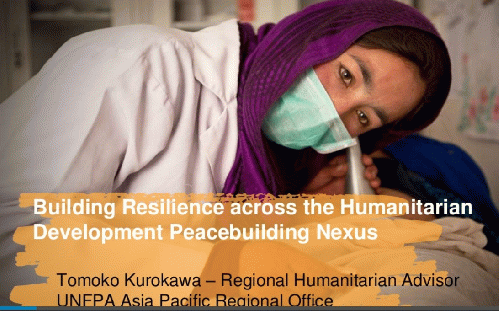
Dr Tomoko Kurokawa calls for boosting resilience at all levels to tide over humanitarian crises
(Image by CNS) Details DMCA
The number of people affected and displaced by conflicts and natural disasters has almost doubled over the past decade and continues to rise. Climate crisis is a major driver and amplifier of disaster risks and losses, even as armed conflicts compel hordes of people to flee their homes in search of safety. Slow-onset disasters, like extreme temperatures and droughts, have added to disaster-related economic losses.
Infectious-disease outbreaks among refugees and displaced persons are also becoming increasingly common and pose a major threat to health security and social protection. The impact is especially severe on women and girls, people living with disabilities and other vulnerable groups.
This changing humanitarian landscape is even more relevant in the Asia-Pacific region, which is the most disaster-prone region of the world. In 2018, 50% of all the 281 global natural disasters occurred in Asia Pacific, with 8 out of the 10 deadliest ones also in this region.
The growing impact of recurrent and protracted disasters and humanitarian crises is posing a major threat to sustainable development and reinforces the importance of developing long-term interventions that address humanitarian needs as well as development and peacebuilding challenges.
While delivering the plenary address at the 9th virtual session of the 10th Asia Pacific Conference on Reproductive and Sexual Health and Rights (APCRSHR10), Dr Tomoko Kurokawa, Regional Humanitarian Advisor at United Nations Population Fund (UNFPA) Asia Pacific, made a case for building resilience across the humanitarian, development and peace-building triple nexus.
What is triple nexus?
The "humanitarian, development and peace nexus" is about synergising the efforts of members of the humanitarian, development, and peace community by ensuring that humanitarians can focus on acute needs and those in development can focus on long-term resilience, promoting peaceful and robust communities.
What is resilience?
(Note: You can view every article as one long page if you sign up as an Advocate Member, or higher).





